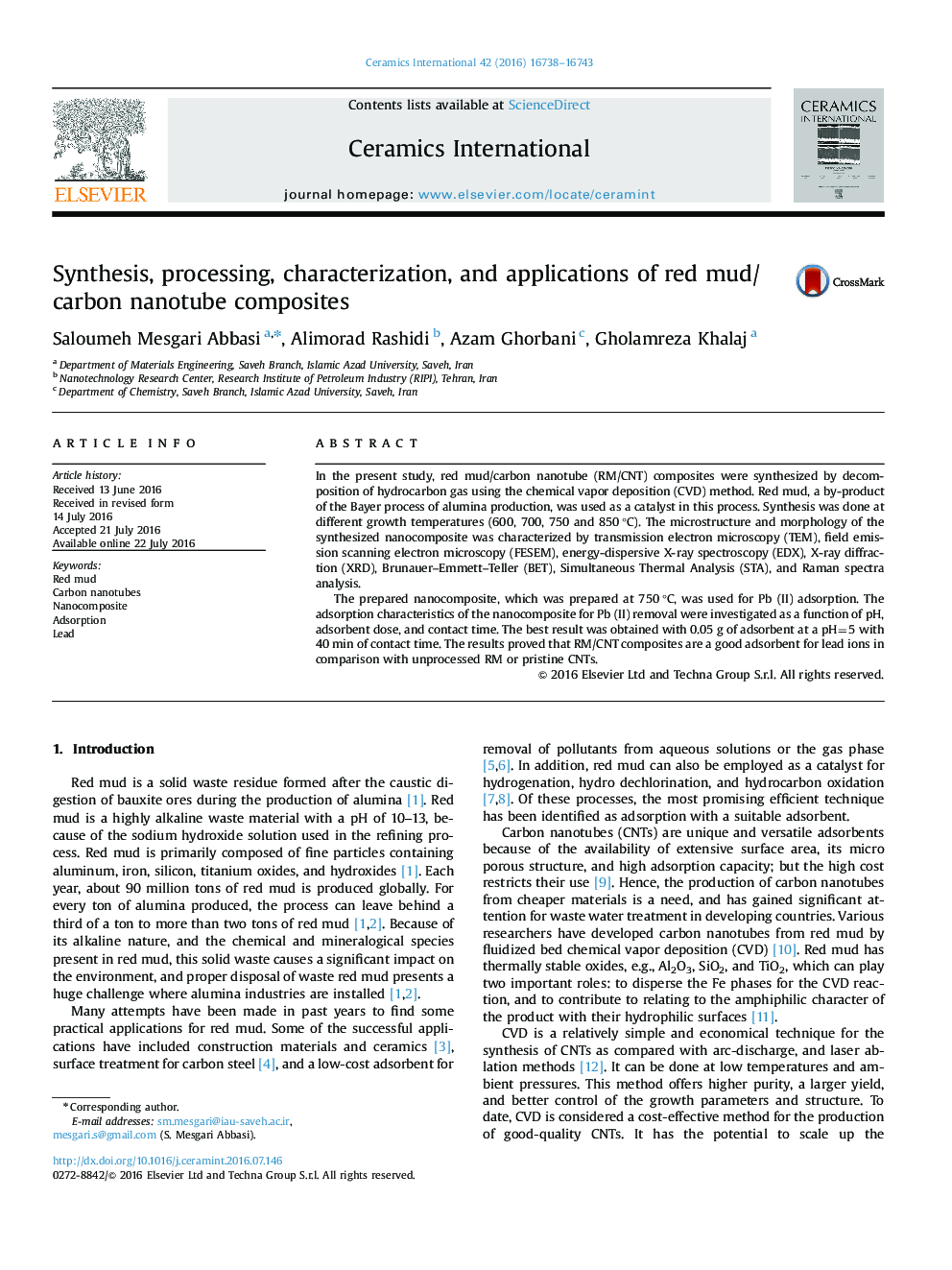| Article ID | Journal | Published Year | Pages | File Type |
|---|---|---|---|---|
| 5438724 | Ceramics International | 2016 | 6 Pages |
In the present study, red mud/carbon nanotube (RM/CNT) composites were synthesized by decomposition of hydrocarbon gas using the chemical vapor deposition (CVD) method. Red mud, a by-product of the Bayer process of alumina production, was used as a catalyst in this process. Synthesis was done at different growth temperatures (600, 700, 750 and 850 °C). The microstructure and morphology of the synthesized nanocomposite was characterized by transmission electron microscopy (TEM), field emission scanning electron microscopy (FESEM), energy-dispersive X-ray spectroscopy (EDX), X-ray diffraction (XRD), Brunauer-Emmett-Teller (BET), Simultaneous Thermal Analysis (STA), and Raman spectra analysis.The prepared nanocomposite, which was prepared at 750 °C, was used for Pb (II) adsorption. The adsorption characteristics of the nanocomposite for Pb (II) removal were investigated as a function of pH, adsorbent dose, and contact time. The best result was obtained with 0.05 g of adsorbent at a pH=5 with 40 min of contact time. The results proved that RM/CNT composites are a good adsorbent for lead ions in comparison with unprocessed RM or pristine CNTs.
